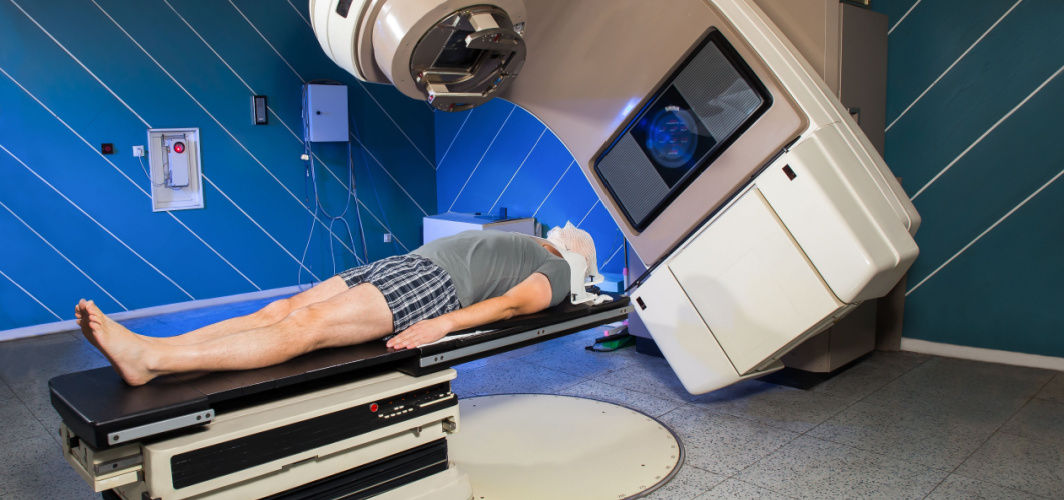General Health
How Does Stereotactic Body Radiation Therapy Help Cancer Patients?
4 min read
By Dr Animesh Saha, Medical Oncology, Apollo Multispeciality Hospitals, Kolkata - 25 September 2023
Share this article
0
0 like

Stereotactic body radiation therapy, or SBRT, is a cancer treatment that uses high radiation doses to damage cancer cells' DNA without affecting healthy tissues. The treatment can cure early-stage cancers. It can shrink tumours, stop disease spread, and stimulate the body's immune system to fight cancer. SBRT is often the choice of healthcare providers while treating lung, kidney, liver, spine, and prostate cancer.
In this blog, we will inform you how SBRT works, what to expect during treatment and its benefits.
How Does SBRT Work?
SBRT uses radiation beams of different strengths and targets at the tumour from various angles. During this treatment, the patient will undergo a CT scan, MRI and other imaging exams to map the tumour's exact location.
Your doctors might also make a mould of your body near the tumour. The mould helps the patient hold still so that treatment remains most effective and the tumour gets precise and complete radiation dose. Then, the patient undergoes 1 to 5 sessions that occur once a day or once every other day. Most sessions take about 30 minutes.
Types of Stereotactic Body Radiotherapy
SBRT technique might vary slightly depending on the machine used to deliver the treatment. Different radiotherapy machines used for SBRT treatment include linear accelerator, helican tomotherapy, cyberknife, and proton beam therapy.
While linear accelerators use X-rays (also called photons) to treat the tumours, proton beam therapy is used to treat tumours that have already had radiation therapy or near vital organs. This technology uses protons to treat tumours over several sessions.
Benefits of Stereotactic Body Radiotherapy
The benefits of stereotactic body radiotherapy include:
- SBRT targets tumours without affecting healthy tissues.
- Fewer treatment sessions are required than conventional radiation treatment.
- Extreme accuracy in targeting hard-to-reach tumours.
What are the Side Effects of Stereotactic Body Radiotherapy?
The early side effects may be experienced soon after the treatment and are usually short-term. These include:
- Hair loss
- Digestion issues
- Fatigue
- Swelling at the treatment site
- Nausea or vomiting
- Irritated, itchy or dry skin
SBRT can also have late side effects which can occur months or even years after the treatment. These include:
- Weak bones
- Bowel or bladder changes
- Lungs changes
- Spinal cord changes
- Swollen arms or legs
- Infertility
- Kidney changes
- Development of a new cancer
How to Prepare for SBRT?
The preparation for SBRT depends on the condition of the patient and the body area that is being targeted. Meanwhile, things you must keep in mind include:
1. Food and Medications
- You may be asked not to eat or drink anything two to three hours before the treatment.
- Ask your doctor if you can take your regular medicines.
2. Clothing and Personal Items
- You should wear comfortable clothing.
- You might be asked to remove or not wear jewellery, eyeglasses, makeup, contact lenses, dentures and more.
3. Medical devices
- You should always tell your healthcare provider if you have any medical devices in your body, such as pacemakers, stents, artificial heart valves or more.
What to Expect During SBRT?
SBRT is an outpatient procedure, so you will not have to stay in the hospital. Each session takes about 30 minutes. You can bring a family member for mental support.
During the procedure, you’ll be exposed to high beams of radiation, which target just the tumour, thus causing minor damage to the surrounding tissues. With each session, the radiation closes the vessels that supply blood to the tumour and kills it.
Things to Take Care of Before the Procedure:
- Your healthcare provider will position your body using custom devices to hold you in place.
- Doctors also use fiducial markers, in or near the tumour, for the target treatment. The marker is about the size of a rice grain.
- Once you are in place, your provider will use imaging technologies to scan your tumour from all sides.
- Using the images, your healthcare provider will plan the best treatment for you.
Things to Take Care of During the Procedure:
Stereotactic Body Radiotherapy is not a painful procedure for adults. Most adults do not need medicines that induce sleep for the treatment. You can even speak to your care team while the procedure is taking place. Children may need medicine to put them in a sleep-like state.
Things to Take Care of After the Procedure:
- You might have some reactions, such as pain or nausea. Your doctor might give you medicines to treat them.
- You can drink or eat after the procedure.
- You can go home on the same day.
- You can get back to your daily routine within a day or two.
Treatment Results
SBRT provides results over time as it’s not an overnight treatment. While non-cancerous tumours might take months to years to shrink, cancerous tumours shrink faster within a few months. You will also be told to take follow-up tests to monitor your progress.
Takeaway
Stereotactic body radiation therapy is a precise cancer treatment that targets the tumour without damaging nearby organs or tissues. It usually gives faster results on cancerous tumours than malignant tumours.
If you have any more questions regarding the treatment,
General Health
Consult Top Medical Oncologists
View AllLeave Comment
Recommended for you

General Health
Benefits Of Drinking Beetroot Juice For Gut Health
Beetroot juice plays a healthy role in supporting digestion and gut health. The fibre and antioxidants in beetroot juice benefit digestion and gut health. You can incorporate it into your diet by making a smoothie or adding it to salad dressing.

General Health
World Contraception Day: Everything you need to know about contraception
World Contraception Day (WCD) was first observed on 26th September 2007 to improve the understanding of birth control and family planning.

General Health
How To Treat Ear Pain In Children
Discover effective ways to treat ear pain in children. Learn about common causes, the latest guidelines, and lifestyle factors that can help alleviate discomfort.
Subscribe
Sign up for our free Health Library Daily Newsletter
Get doctor-approved health tips, news, and more.
Visual Stories

Plant-based Foods That Are a Great Source of Iron
Tap to continue exploring
Recommended for you

General Health
Benefits Of Drinking Beetroot Juice For Gut Health
Beetroot juice plays a healthy role in supporting digestion and gut health. The fibre and antioxidants in beetroot juice benefit digestion and gut health. You can incorporate it into your diet by making a smoothie or adding it to salad dressing.

General Health
World Contraception Day: Everything you need to know about contraception
World Contraception Day (WCD) was first observed on 26th September 2007 to improve the understanding of birth control and family planning.

General Health
How To Treat Ear Pain In Children
Discover effective ways to treat ear pain in children. Learn about common causes, the latest guidelines, and lifestyle factors that can help alleviate discomfort.